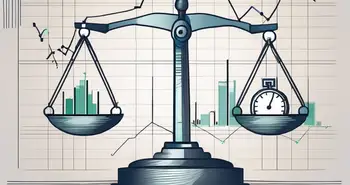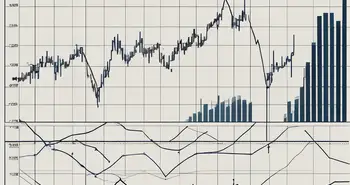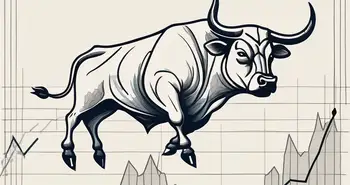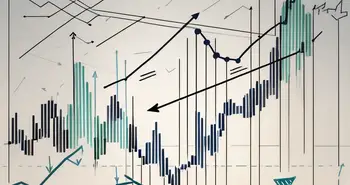Choppiness Index Explained: How to Use It for Accurate Market Analysis
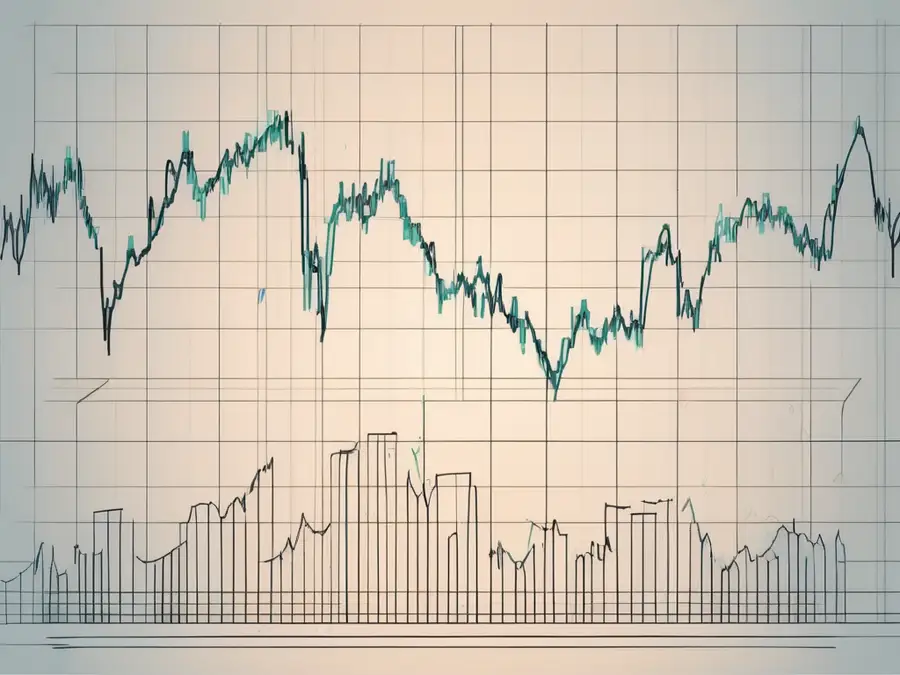
In the ever-volatile world of trading, understanding market conditions is key to making informed decisions. The Choppiness Index, though not as widely known as other technical indicators, is a powerful tool that can help traders identify whether a market is trending or moving sideways. By measuring the degree of market choppiness, this index allows you to fine-tune your trading strategy, ensuring you’re not caught off guard by sudden shifts.
In this article, we’ll explore the Choppiness Index in depth, from its calculation and interpretation to practical examples of its application in different market scenarios. Whether you're a seasoned trader looking to enhance your toolkit or a newcomer eager to learn, this guide will provide you with the insights needed to leverage the Choppiness Index effectively in your trading strategy.
What is the Choppiness Index?
The Choppiness Index is a technical analysis tool that measures the trendiness or choppiness of a financial market. It was developed by Australian trader and author E.W. Dreiss. This indicator helps traders assess whether a market is trending or range-bound. Understanding the market's behavior is crucial for making informed trading decisions.
The Origin of the Choppiness Index
The Choppiness Index was first introduced by Dreiss in his book, “The Trader's Edge: Cashing in on the Winning Strategies of Floor Traders, Commercial and Market Traders”. Dreiss designed this index to overcome the limitations of existing trend indicators and provide a more accurate assessment of market trends.
In his book, Dreiss highlighted the challenges traders face when trying to identify and capitalize on market trends. He observed that many existing indicators were often lagging or misleading, leading to poor trading decisions. To address this issue, Dreiss developed the Choppiness Index as a comprehensive tool that takes into account the range between the highest-high and the lowest-low prices over a specified period.
By incorporating this range, Dreiss aimed to capture the true volatility and directionality of the market, enabling traders to make more informed decisions. The Choppiness Index became a valuable addition to technical analysis, providing a clearer picture of market trends.
While analyzing market trends can be complex, Morpher AI simplifies the process by offering real-time insights and advanced analysis tools. Even if the Choppiness Index isn’t directly monitored, Morpher AI empowers you to stay ahead by providing data-driven recommendations based on a wide range of indicators. Elevate your trading strategy with Morpher AI and make more informed decisions, whether you’re navigating a choppy market or following a strong trend.
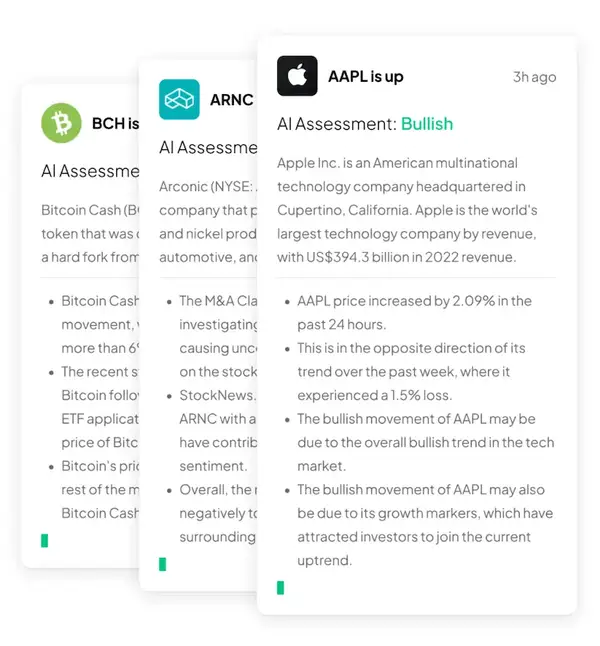
Basic Concept and Calculation
The Choppiness Index is calculated using a formula that takes into account the range between the highest-high and the lowest-low prices over a specified period. The result is then normalized to a value between 0 and 100. A low value indicates a choppy market, while a high value suggests a trending market.
To calculate the Choppiness Index, traders need to determine the highest-high and the lowest-low prices over a specific time frame. This time frame can vary depending on the trader's preference and the market being analyzed. Once the range is established, the formula is applied to calculate the Choppiness Index value.
Let's say we're analyzing a stock over a 14-day period. During this time, the highest-high price is $150, and the lowest-low price is $130.
- Calculate the True Range (TR):
- True Range for each day is calculated as the maximum of:
- The difference between today’s high and today’s low
- The absolute difference between today’s high and yesterday’s close
- The absolute difference between today’s low and yesterday’s close
Assuming that the average True Range (ATR) over the 14-day period is $2.5, we sum up the ATR values for these 14 days:
Sum of ATR (14-day) = 2.5 × 14 = 35
- Calculate the Range (Highest-High – Lowest-Low):
Range = 150 – 130 = 20
- Apply the Choppiness Index Formula: The formula for the Choppiness Index (CI) is as follows:
CI = 100 × log10(Sum of ATR (14-day) / Range) ÷ log10(14)
CI = 100 × log10(35 / 20) ÷ log10(14)
CI ≈ 100 × log10(1.75) ÷ log10(14)
CI ≈ 100 × 0.243 ÷ 1.146
CI ≈ 21.2
Traders can then interpret the Choppiness Index value to gain insights into the market's behavior. A low value suggests that the market is experiencing a period of choppiness, characterized by frequent and unpredictable price fluctuations. On the other hand, a high value indicates a trending market, where prices are moving in a more consistent and directional manner.
Now that we have covered the basics of the Choppiness Index, let's explore its importance in trading.
The Choppiness Index plays a crucial role in helping traders identify the market's current state and adjust their trading strategies accordingly. By understanding whether the market is trending or range-bound, traders can adapt their approach to maximize their chances of success.
For example, during periods of high choppiness, traders may choose to adopt range-bound strategies that capitalize on short-term price fluctuations. These strategies often involve identifying support and resistance levels and executing trades based on price reversals within the established range.
On the other hand, when the Choppiness Index indicates a trending market, traders may opt for trend-following strategies. These strategies involve identifying the direction of the trend and entering trades in the same direction, aiming to ride the trend for maximum profit potential.
By incorporating the Choppiness Index into their analysis, traders can gain a more comprehensive understanding of the market's behavior and adjust their strategies accordingly. This tool helps traders avoid potential pitfalls and make more informed trading decisions.
The Importance of the Choppiness Index in Trading
Role in Identifying Market Trends
The Choppiness Index plays a crucial role in identifying market trends. By measuring the choppiness of a market, traders can determine whether the market is in a trend or is range-bound. This information helps traders adjust their strategies accordingly.
Significance in Volatility Measurement
In addition to identifying trends, the Choppiness Index also provides insights into market volatility. By assessing the choppiness of a market, traders can gain a better understanding of the level of uncertainty and potential risk. This knowledge can be valuable when managing positions and setting stop-loss orders.
Now that we have explored the importance of the Choppiness Index, let's take a closer look at how to interpret it.
Interpreting the Choppiness Index
Understanding the Index Values
The Choppiness Index values range from 0 to 100. A value below 38 indicates a choppy or range-bound market, while a value above 62 suggests a trending market. Values between 38 and 62 indicate a transitional phase, where the market may be moving from a choppy to a trending state or vice versa.
| Choppiness Index Value | Market Condition | Description |
|---|---|---|
| 0 – 38 | Choppy/Range-Bound Market | The market is experiencing low volatility with frequent and unpredictable price fluctuations. |
| 38 – 62 | Transitional Phase | The market is in a state of transition, possibly moving from choppy to trending or vice versa. |
| 62 – 100 | Trending Market | The market is showing a clear directional movement, with prices trending up or down in a consistent manner. |
Reading the Choppiness Index Chart
The Choppiness Index is often plotted as a line chart alongside the price chart. Traders can observe the movement of the index to assess the market's behavior. When the index remains below 38, it indicates a choppy market, while values above 62 suggest a trending market. Traders can use these observations to make informed trading decisions.
Now that we have covered the interpretation of the Choppiness Index, let's discuss how to incorporate it into trading strategies.
Using the Choppiness Index in Trading Strategies
Incorporating the Index in Trend Following Strategies
One way to utilize the Choppiness Index is by incorporating it into trend following strategies. When the index indicates a trending market, traders can use this information to enter or exit positions in line with the trend. This can help traders ride the trend and potentially capture larger profits.
Utilizing the Index in Range Trading
On the other hand, during choppy or range-bound markets, traders can use the Choppiness Index to identify potential reversal points or breakouts. By analyzing the index alongside other technical indicators or chart patterns, traders can find trading opportunities within the range-bound market conditions.
While the Choppiness Index can be a valuable tool for traders, it also has its limitations and challenges. Let's explore those next.
Limitations and Challenges of the Choppiness Index
Potential Misinterpretations
One of the challenges with the Choppiness Index is the potential for misinterpretations. Traders may mistakenly assume that a choppy market will always transition into a trending market or vice versa. It is important to remember that the Choppiness Index is just one tool and should be used in conjunction with other indicators and analysis.
Situations Where the Index May Fail
Another limitation of the Choppiness Index is that it may not be as effective in certain market conditions, such as during periods of extreme volatility or during news releases. Traders should be aware of these limitations and adapt their strategies accordingly.
Now that we have discussed the limitations of the Choppiness Index, let's revisit the key points covered in this comprehensive guide.
FAQ – Understanding the Choppiness Index
By understanding the Choppiness Index, traders can gain valuable insights into market trends and volatility. Whether you are a beginner or an experienced trader, incorporating this indicator into your trading arsenal can help you make more informed and profitable trading decisions. Remember to always consider the Choppiness Index alongside other technical indicators and analysis, and adapt your strategies to different market conditions. Happy trading!
Ready to put the Choppiness Index to the test in a real-world trading environment? Look no further than Morpher, the revolutionary trading platform that leverages blockchain technology for a seamless investing experience. With Morpher, you can trade a variety of asset classes, from stocks and cryptocurrencies to unique markets like NFTs, without the burden of fees or the worry of liquidity. Embrace the power of fractional investing, short selling, and up to 10x leverage to enhance your trading strategies. Plus, enjoy the peace of mind that comes with the secure, non-custodial Morpher Wallet. Experience the future of trading with Morpher's unique Virtual Futures and take your trading to the next level. Sign Up and Get Your Free Sign Up Bonus today, and join the global community of traders who are already navigating the markets with precision and confidence.

Disclaimer: All investments involve risk, and the past performance of a security, industry, sector, market, financial product, trading strategy, or individual’s trading does not guarantee future results or returns. Investors are fully responsible for any investment decisions they make. Such decisions should be based solely on an evaluation of their financial circumstances, investment objectives, risk tolerance, and liquidity needs. This post does not constitute investment advice.

Painless trading for everyone
Hundreds of markets all in one place - Apple, Bitcoin, Gold, Watches, NFTs, Sneakers and so much more.

Painless trading for everyone
Hundreds of markets all in one place - Apple, Bitcoin, Gold, Watches, NFTs, Sneakers and so much more.

